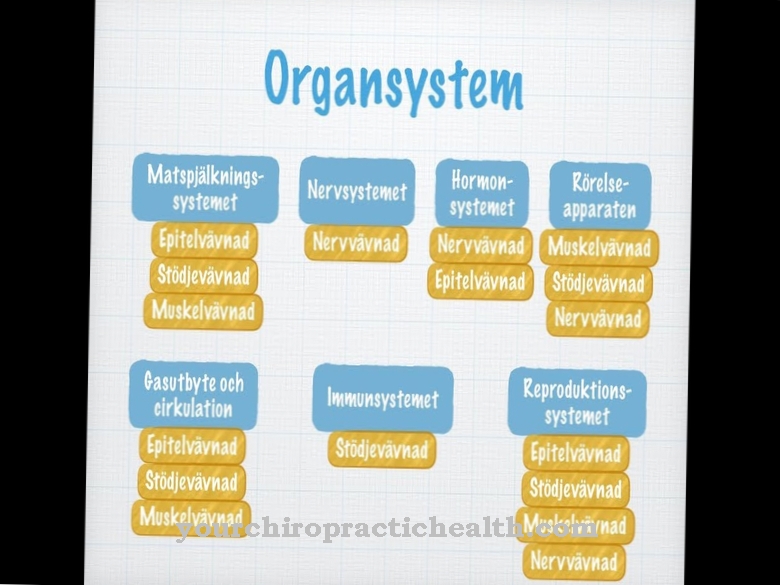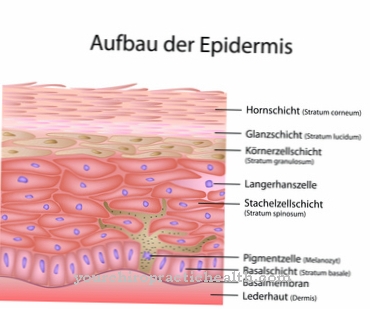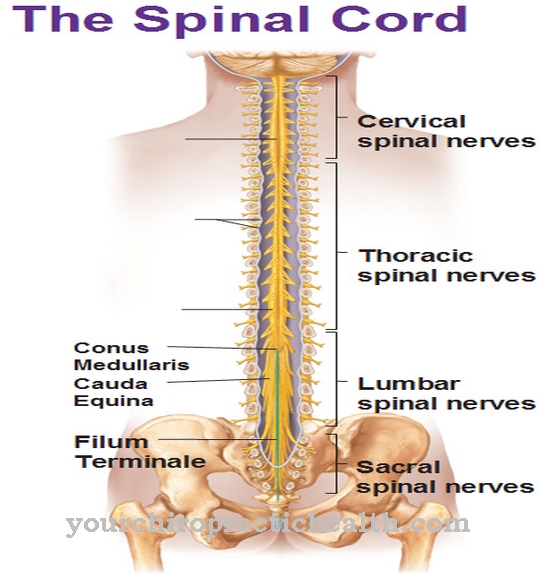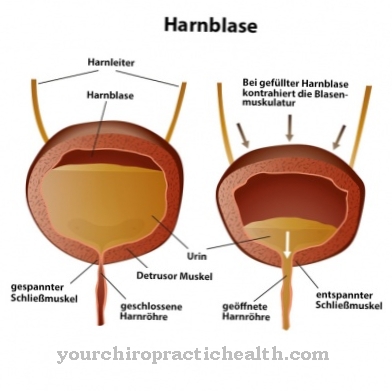Of the Musculus constrictor pharyngis superior is a skeletal muscle of the throat and consists of four parts. It blocks the access to the nose when swallowing. Soft palate paralysis and certain neurological disorders can interfere with the closure and contribute to swallowing disorders.
What is the superior pharyngeal constrictor muscle?
The superior pharyngeal constrictor muscle or upper throat cords is located in the throat and, along with other muscles, is responsible for constricting the pharynx. This process is necessary when swallowing so that no liquid or food enters the connection to the nose.
In addition to the superior pharyngeal constrictor muscle, the pharyngeal musculature has two other cord muscles, namely the middle and lower pharyngeal constrictor muscles (pharyngis medius constrictor muscle and inferior pharyngeal constrictor muscle). They arise during embryonic development from the third, fourth and sixth gill arches. For this reason, the pharyngeal constrictor muscle does not form a uniform tissue, but has the characteristic three-part division. The musculus constrictor pharyngis superior belongs like the other throat muscles to the striated muscles of the human body.
Anatomy & structure
The basic structure of the musculus constrictor pharyngis superior forms a square surface and can be structurally divided into four areas, each of which has a different origin. The only insertion of the pharyngeal muscle is at the pharynx suture (raphe pharyngis), at which the musculus constrictor pharyngis medius and the musculus constrictor pharyngis inferior also end.
The pars pterygopharyngea of the musculus constrictor pharyngis superior arises from the hamulus pterygoideus ossis sphenoidalis, which belongs to the base of the skull and there is assigned to the sphenoid or wasp bone (os sphenoidale). In contrast, the pars buccopharyngea arises from the pterygomandibular raphe, which lies next to the pterygoid hamulus. On the other side of the pterygomandibular raphe, on the other hand, is the mylohyoid linea, which belongs to the lower jaw (mandible). The third part of the musculus constrictor pharyngis superior, the pars mylopharyngea, originates from the linea mylohyoidea. The fourth and last section of the pharynx is the pars glossopharyngea. Its origin is at the transversus linguae muscle, which is a tongue muscle.
The superior pharyngeal constrictor muscle receives nerve signals from the ninth cranial nerve (glossopharyngeal nerve) and the tenth cranial nerve (vagus nerve). Fibers from both nerve tracts meet in a nerve plexus in the pharynx: the pharyngeal plexus.
Function & tasks
The muscle constrictor pharyngis superior has the task of closing the nasopharynx when swallowing, so that no liquid or food can penetrate and instead the entire mouth ends up in the esophagus. Nerve fibers from the pharyngeal plexus signal the superior pharyngeal constrictor muscle to contract.
When the throat muscle tenses, a bulge forms in the nasopharynx (epipharynx). This bulge is also known as Passavant's annular bulge. The superior pharyngeal constrictor muscle pulls the Passavant's annular bulge in the direction of the soft palate, whereby the soft palate must be in a horizontal position. The soft palate lifter (Musculus levator veli palatini) and the soft palate tensioner (Musculus tensor veli palatini) are responsible for its positioning. The larynx must also be closed when swallowing - this task is performed by the thyrohyoid muscle.
When swallowing, many muscles have to work together in a coordinated manner. The control is based on an area of the brain that is also known as the swallowing center because of its function and is located in the elongated medulla (medulla oblongata). The swallowing center does not form a tissue structure that is anatomically clearly delimited, but a functional network of nerves that is distributed over different areas of the brain. Some parts of the swallowing center are also located in the cerebrum.
You can find your medication here
➔ Medicines for sore throats and difficulty swallowingDiseases
During the act of swallowing, the task of the superior pharyngeal constrictor muscle is to form the Passavant's annular bulge and to pull it towards the soft palate.The process will help seal access to the nose. This process can be disturbed in the context of soft palate paralysis.
The infectious disease diphtheria is a possible cause of the soft palate paralysis. This is a bacterial disease that affects the upper respiratory tract. Difficulty swallowing and a sore throat are usually the first signs, along with tiredness, malaise and fever. In diphtheria, a coating typically develops in the throat that is white to yellowish in color.
In addition, the lymph nodes can swell. In addition to soft palate paralysis, other secondary diseases such as croup and myocarditis are possible. As a result of the soft palate paralysis, the upper pharynx and the soft palate lifter and tensioner can no longer close the upper pharynx and liquid or food can penetrate the nasal cavity.
However, paresis of the soft palate does not have to be due to diphtheria. It can also be based on damage to the vagus nerve, as can be the case with certain brainstem syndromes. They include Wallenberg Syndrome and Jackson Syndrome, both of which can occur as a result of a stroke. A stroke or cerebral infarction is caused by a circulatory disorder in the brain, often due to the (partial) occlusion of a supplying artery. Parts of the brain are undersupplied in a stroke and can be irreversibly damaged if the deficiency persists for too long.
Neurodegenerative diseases also damage the swallowing center in some cases. Similar symptoms often occur in multiple sclerosis and Parkinson's syndrome. Injuries and tumors are also possible causes of lesions in the swallowing center. However, nerve damage can only occur in the course of the innervating nerve tracts, for example the pharyngeal plexus.





.jpg)











.jpg)







.jpg)


